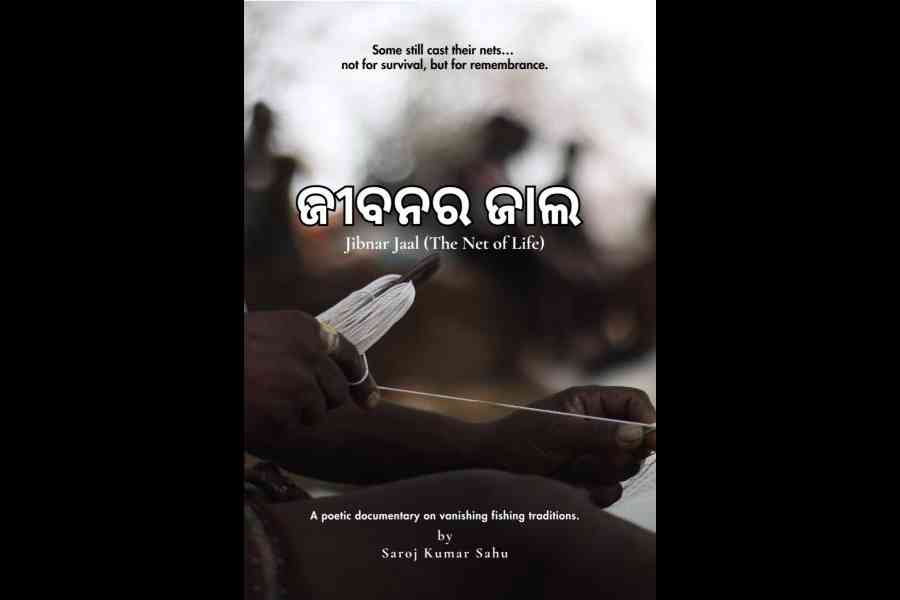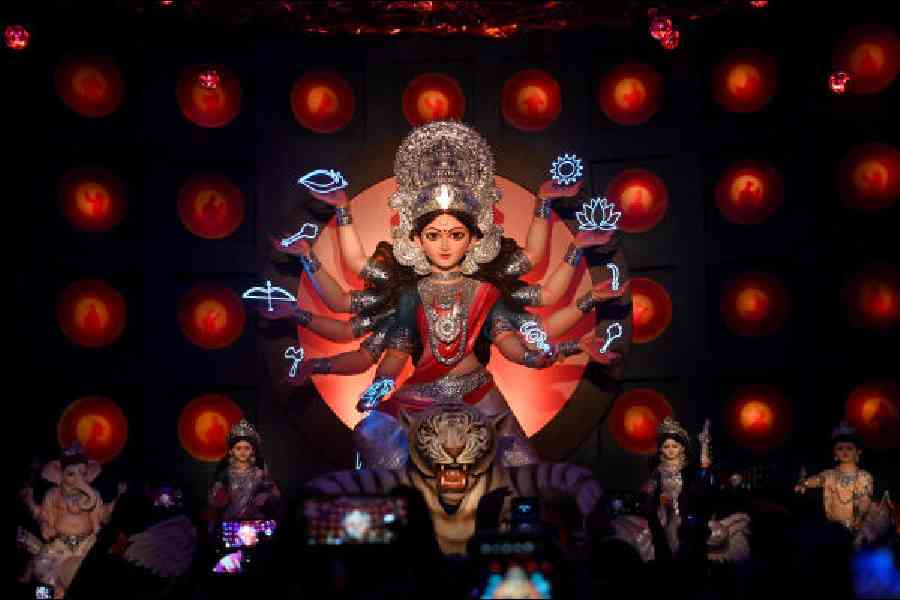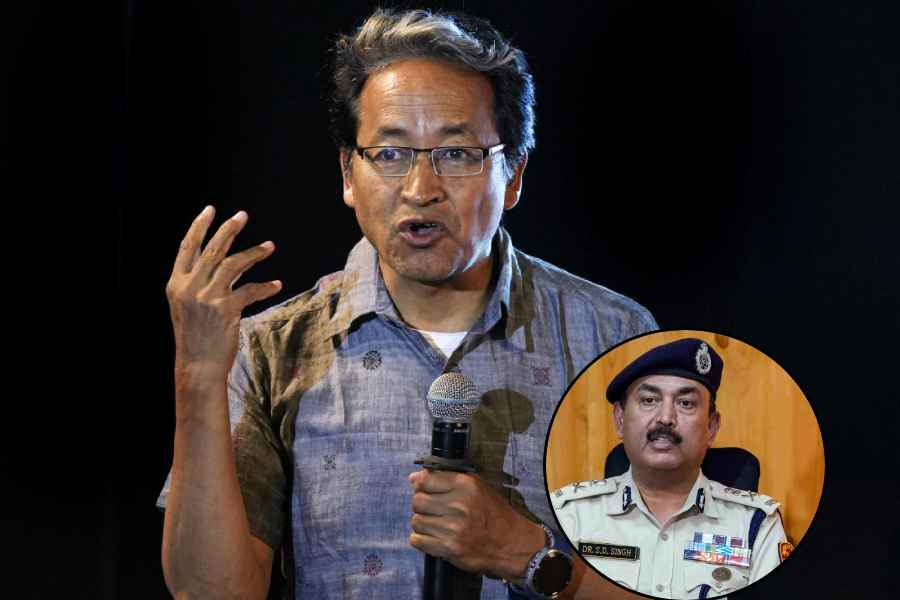.jpg)
When the buzz in Barcelona's theatre circles around Kalaripayattu reached Esther Freixa, she assumed it was some new school of method acting. "Everyone was talking about how Kalaripayattu training works wonders for stage actors," recalls the 34-year-old Spanish theatre actor, director and teacher.
It took some Googling to learn that Kalaripayattu was, in fact, an ancient Indian martial arts form.
Freixa decided to find out for herself. She made a trip to Calicut - said to be Kalaripayattu's birthplace - in 2012 and checked into the Hindustan Kalari Sangam for a five-week introductory course on the combat art.
It was time well-spent. "The training changed my on-stage body language. My energy levels soared and I was emoting with my whole body," says the petite, grey-eyed actor, sitting on the steps leading into the enclosed, mud-floored training area.
Freixa is back at the Kalaripayattu school - located in Puthiyara, a quiet, leafy locality of Calicut - for the fourth time. "I'm at the second level of training - fighting with wooden weapons," she says.
Ninjas and Samurais are passé. It's Kerala's 900-year-old combat art - with its arsenal of swords, shields and daggers, gravity-defying aerial kicks and lunges and powerful torso-bends - that's finding followers in theatre, cinema, contemporary dance, gyms and even graphic novels.
Kalaripayattu - Kalari for short - is also the new travel souvenir that foreign tourists are taking back from India. "We have hosted over 1,000 overseas students at our centres in Calicut and Puducherry," says Lakshman, who runs the Hindustan Kalari Sangam.
Last month, a video featuring a 76-year-old, sari-clad warrior went viral on the Internet. The clip shows Meenakshiamma, a teacher who runs a Kalari gurukul in Vadakara, Kerala, display some serious stick fighting chops. With the loose end of her sari tucked into the waist, she takes on a man half her age, showing no signs of slowing down. The video was viewed 12 lakh times.
Kalari is, clearly, enjoying a coming-out party. "Suddenly, everyone wants to learn Kalaripayattu," says Sunil Kumar, who runs a Kalari school and therapy centre, CVN Kalari, in the heart of cacophonous Calicut.
It's late evening, but the compact gurukul campus is buzzing. About a dozen young children are practising their Kalari moves - full-splits, squats, 90-degree backbends - in the mud-floored gym, lined with metal weapons on either side. Their oiled bodies move like rubber bands. "We have over 100 students training here currently," says Kumar.
Historians trace Kalaripayattu to 1100 AD, when combat training became important for Kerala's armies, caught in battles between the Cholas and the Cheras. "Tales of Kalari warriors became the stuff of heroic legends, much like Japan's Samurai sagas," says Kumar.
The combat art went into hiding after it was banned by the British. It never really recovered from there. "A sword-and-shield fight form had no takers in the modern world. We saw Kalari almost decline into obscurity," says T. Sudhakaran, who runs a CVN Kalari school in Calicut's Edakkad locality.
However, in the last few years, Kerala's Kalari tradition has reinvented itself. It's not just about swordplay anymore. "Kalari's lithe, animal moves, mind-body coordination and rigorous physical training is appealing to people in performing arts and fitness buffs," says Sudhakaran.
Bollywood has also played a role in Kalari's comeback. The martial arts armoury of swords, daggers, shields and the deadly urumi - a sword with a flexible, whip-like blade - make perfect props for filming fight scenes.
"Kalari-choreographed fights fit perfectly into period films - and Bollywood has been making plenty of them in recent years," says Sunil Kumar, who counts Shah Rukh Khan, Ajay Devgn, Deepika Padukone and Ranveer Singh among his pupils. He's choreographed combat scenes for 25 Hindi movies, spending a good part of last year on the sets of Bajirao Mastani.
Actor Tiger Shroff too shows off his Kalari moves in Baaghi, an action thriller that released in April, this year. Ranjan Mullarat's phone didn't stop ringing for a long time after the film hit the screens. "I was flooded with enquiries on Kalari training, from places as way off as Ambala and Bhiwani," says Mullarat, who runs the Kalari Academy of Performing Arts in Bangalore.
In 2005, Kerala's tourism department sent a proposal to Hollywood actor Jackie Chan, with an offer to be the state's global tourism brand ambassador. A compact disc showcasing Kerala's cultural heritage was sent along as well.
The tourism department didn't hear back from Chan, but Sunil Kumar did. "We had shot a Kalari sequence for the CD. Jackie Chan decided to make it a part of his upcoming film, The Myth," recalls the Kalari exponent. A team of CVN's Kalari fighters flew to Shanghai for a 30-day shoot with the Kung Fu king.
Kalaripayattu is also helping contemporary dancers' script new dance languages. "You cannot categorise Kalari as a pure combat art. It is highly ritualistic and works with a series of measured steps, animal postures, high leaps and lunges that can easily be adapted to dance," says Jaichandran Palazhi, founder of the Attakkalari Centre for Movement Arts, Bangalore.
While researching on Kalari, Palazhi found that the clanging sword fights were only the tip of what the art offered. He set about documenting the martial art. Last year, Attakkalari brought out an interactive DVD on Kalaripayattu. "It is a knowledge bank of what Kalari is, how it is done and its importance," says Palazhi.
The growing connect between performing arts and Kalari has been symbiotic, believes Veena Basavarajaiah, a Bangalore-based contemporary dancer. With sword fights turning redundant, Kalari was looking for a new space to exist in today's world. "At the same time, a new generation of Indian dancers was looking for tools to create new languages," she says, adding that her own dance style is a fusion of Bharatnatyam, Ballet, Kathak and Kalari.
For Suhas Sundar, Kalaripayattu remains on the battleground. In 2012, Sundar's Bangalore-based Nihodo Media published a graphic novel, Odayan, on a sword-wielding Kalari warrior who takes on the Zamorins of 14th century Kerala.
"There are reams of comic literature on the Samurais and Shifus of Kung Fu. But nothing on the Nairs and the Nambiars, the warriors of Kerala. We decided to fill the gap," says Sundar, CEO, Nihodo Media. The second part of the Odayan series was published in 2014, and the third will be out next year.
Kalari has, clearly, found many avatars. The next time you see someone mimicking a wild boar pose, be sure she's onto something creative.

.jpg)








